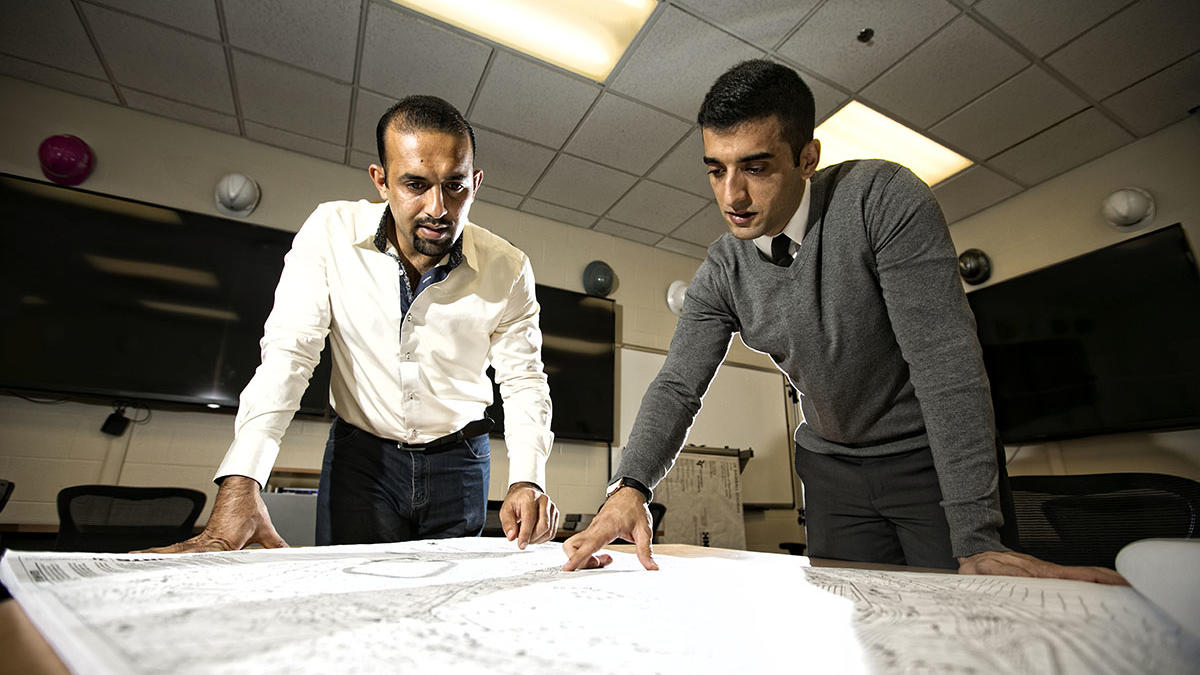The Kentucky Transportation Center (KTC) has announced that it will receive approximately $900,000 for new projects that will strengthen Kentucky’s commercial vehicle enforcement programs and improve motor carrier compliance with state and federal regulations. KTC’s funding is part of $2.5 in awards to the Commonwealth of Kentucky under the U.S. Department of Transportation Federal Motor Carrier Safety Administration’s High Priority Innovative Technology Deployment Grant and Commercial Motor Vehicle programs, as well as a Commercial Driver’s License Program Implementation grant.
Below is a brief introduction to each of KTC’s six new projects.
1. VOICE RECOGNITION/AUDIBLE ALERT FEATURE FOR THE CVIEW
The goal of this project is to increase the vehicle out-of-service (VOOS) rate and the number of violations per inspection on roadside inspections performed by Kentucky State Police – Commercial Vehicle Enforcement (KSP-CVE). Toward this goal, Kentucky is seeking to develop a voice recognition and audible alert feature for the CVIEW. This would allow officers to safely utilize the screening capabilities within the CVIEW while roadside (stationary or mobile). This enhancement to the CVIEW will help roving officers to identify carriers with serious safety issues (such as a Federal Out-of-Service) and credential problems (such as non-payment of UCR and a revoked IFTA license).
2. ADD REAR LICENSE PLATE READER TO KATS SITES
The goal of this project is to provide enforcement the capability of reading trailer license plates and checking them against a stolen vehicle database. This would also allow enforcement to electronically check intrastate trucks and other trucks that are not required to have a license plate on the front of the vehicle. Kentucky is seeking to enhance their Kentucky Automated Truck Screening (KATS) software to allow it to check trucks that do not have a front license plate and to screen vehicles/trailers against a stolen vehicle database. This would allow officers to gather safety, credential, and tax information on trucks without a front license plate and also allow them to determine if a vehicle/trailer is a potential match to a stolen vehicle database.
3. EXPANSION OF THERMAL IMAGING SYSTEMS
The purpose of this project is to install and operate two manual brake screening systems at Kentucky inspection facilities to enhance the quality of Level 1 safety inspections and therefore improve commercial vehicle safety. This project also enhances the efficiency of enforcement by providing a tool to quickly identify commercial vehicle safety problems.
Kentucky State Police Commercial Vehicle Enforcement (KSP-CVE) personnel are utilizing the systems to screen commercial vehicles as they come down the weigh station ramp into the facility. If a potential problem is identified, the vehicle is stopped and the problem is further investigated by inspection. This project will allow for the implementation of two new systems at the chosen facilities. These camera systems are stand-alone systems that will not need to be interfaced with other systems at the weigh station or back office.
4. REPLACEMENT OF ROADSIDE SCREENING EQUIPMENT
The purpose of this project is to replace a portion of Kentucky’s aging roadside screening systems and associated hardware. Kentucky currently has 16 automated screening systems. These systems are a very effective tool for commercial vehicle enforcement officers. The volume of truck traffic at weigh stations is extremely high therefore personnel are only able to inspect a small percentage of all vehicles. A screening system allows personnel to target “high-risk” carriers for inspection making better use of their time. Although volumes are lower on side routes, virtual weigh stations also improve efficiency and effectiveness by identifying “high-risk” carriers for inspection. These systems also provide the ability for enforcement to target specific issues if desired. Personnel can direct the system to pull in specific types of potential violations and then focus their efforts there.
5. UPDATE OF KENTUCKY’S ITD PROGRAM PLAN AND TOP LEVEL DESIGN (PP/TLD)
Each year, FMCSA requires states to provide an updated Project Plan and Top Level Design (PP/TLD) before the state can submit an application for grant funding. The PP/TLD document provides an overview of Kentucky’s commercial vehicle-related technologies as well as descriptions of the systems and components that make up the architecture. In addition, the document describes any new software or hardware components that will be added to the architecture. The PP/TLD also explains how those new components will interface with currently deployed technology and how they improve the state’s Core ITD program.
The purpose of this project is to conduct a thorough review of Kentucky’s PP/TLD and expand the scope of the document to accommodate long-range planning efforts as well as provide more in-depth detail about Kentucky’s ITD architecture. This request will help Kentucky plan for future ITD deployment with projects that will demonstrate new technology while reducing CMV crashes and improving the efficiency of CMV enforcement and operations.
6. LINKING BAD CREDENTIALS TO SAFETY ISSUES
Kentucky commercial vehicle enforcement officers and administrators of motor carrier programs have long suspected there is a connection between safety violations and credentialing violations (i.e. violations that have to do with required credentials, permits, or taxes owed). This project will utilize screening data, inspection data and citation data to develop a statistical model assessing the strength of the relationship between bad credentials and safety violations. It is the contention of many officers, inspectors and administrators that multiple violators violate safety and credentialing requirements for the same reason – the cost of compliance. However, others have suggested the two may bear little to no meaningful relationship, which means states must balance competing enforcement goals in order to ensure safety and compliance with credentialing, permitting, and tax requirements. This primary goal of this project is to collect pre-clearance screening data, automated ramp screening data, and inspection data to determine whether there is a connection between bad credentials and safety violations.
